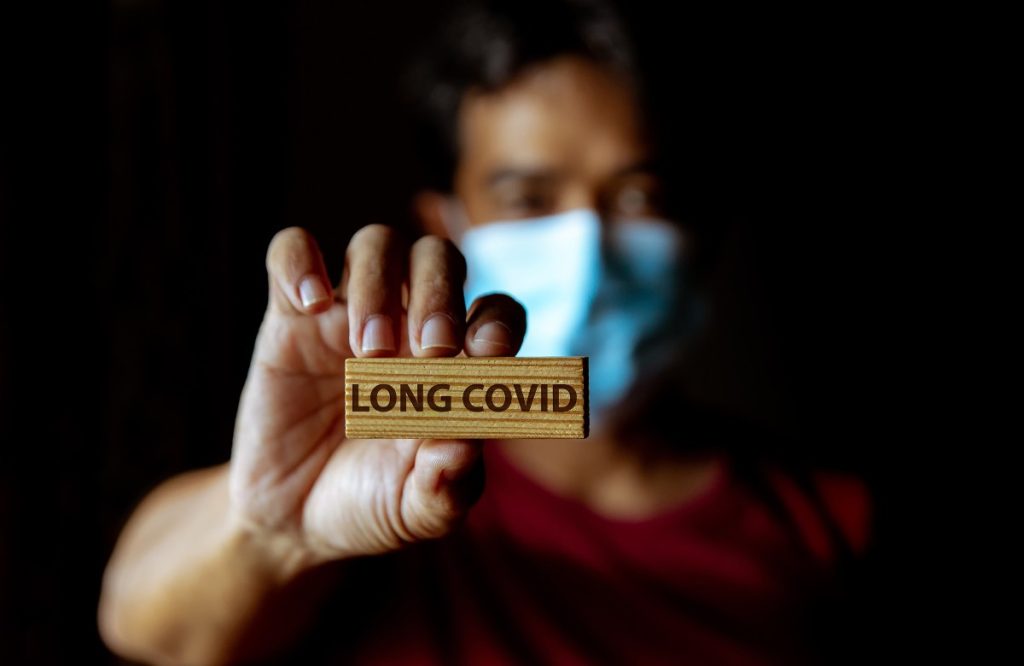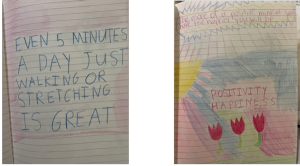
“It’s a very insidious, beneath-the-radar-screen public health emergency…. [F]unction is being considerably impaired…[but] that doesn’t attract as much attention as a death rate.” (Dr. Anthony Fauci interview about long COVID, October 2022)
I scanned Robbins Auditorium on Rose F. Kennedy (RFK) Center Day. I noted few masks; mine was the only N95. With the announced lifting of the nation’s public health emergency, Einstein had relaxed its COVID policy the day before the event. Everyone was celebrating 50+ years of developmental disabilities care, advocacy, research, and training at Einstein-Montefiore. I attended as the co-director of our RFK University Center for Excellence in Developmental Disabilities (UCEDD). That day, some of our UCEDD’s adult self-advocates and parents of children with rare diseases shared their experiences of advocating for awareness, research, and treatments. The confluence of work and family needs struck me that day. I realized just how much the speakers’ lessons resonated with me.
For example, my previously healthy 20-something daughter has long COVID. Among her symptoms are severe fatigue, postexertional malaise, and muscle pain. In March 2020 she lost her senses of smell and taste. Though she was never hospitalized, like many first-wave patients she was especially vulnerable to long COVID. She worked through gastrointestinal issues, mild chest pain, and exercise intolerance. Following a viral (non-COVID-19) illness in late 2021 her symptoms worsened; her waking heart rate rose to 140. She was diagnosed with postural orthostatic tachycardia syndrome (POTS), a heterogeneous dysautonomic (nervous system) disorder often triggered by a viral infection. Common in long COVID, it has no cure.
Long COVID constitutes a mass-disabling condition. Census Bureau data from April/May 2023 found that in adults with long COVID, 79 percent had to limit daily activities and 24 percent reported significant limitations. Among all U.S. adults at the time of the survey, an estimated 14.5 million reported having symptoms of long COVID. Of those, an estimated 11.9 million had some limitations, and an estimated 3.6 million were experiencing significant limitations. Women, transgender individuals, and people with disabilities are disproportionately affected, as are Black and Hispanic adults, according to recent census data.
These numbers may be an undercount. When I shared this story with an Einstein colleague, she said her 20-something daughter had similar symptoms most of last year, and wondered if it was long Covid. The numbers also fail to capture the lived experience, but quotes from a PBS report offer a glimpse:
- Physically, long COVID has absolutely just ruined my life….Many days, I still can’t even get out of bed.
- Now I have these debilitating symptoms. And there’s no treatment and no cure for it.
- I am able to walk now, but…I wish I could work. I wish I could live a life like most other able-bodied people.
My daughter’s clinical and care-seeking trajectories are complex. But 3 years later she finds it difficult to walk more than a few blocks, took 12 weeks medical leave from her remote job, and (eventually) qualified as having a disability under the ADA. In November 2022 her fatigue markedly increased after I exposed her to a viral (non-COVID) illness, One month later, she moved back home from her first place—a 5th floor Manhattan walk-up. The décor was a smart mix of “French café” and “thrifty chic”—a retro red microwave rescued from the curb and a tag sale faux French bistro chalkboard. On move-in day I recall wiping down the kitchen shelves (a “mom gene” trait) and finding the prior tenant’s rent receipt. Though she’d apparently gotten a “COVID deal” on her rent, she’s paying a steep price for COVID.
While DIY is fine for furnishing your first apartment, it’s a shameful response to a mass-disabling condition. But that’s what this has felt like. With a job and health insurance, my daughter pieces together care from specialists in cardiology, neurology, gastroenterology, immunology, nutrition, otolaryngology, psychiatry, and sleep medicine, which she complements with acupuncture, meditation, and gentle yoga. Fortunately, she’s able to apply her master’s degree in public health to help analyze the medical literature.
One bright spot has been Dr. Seth Congdon, co-director of Montefiore-Einstein’s COVID-19 Recovery Clinic. He gave a long COVID webinar for our UCEDD’s grant-funded VaxFactsDDNY project. That led us to seek him out. As a clinician he is thorough, comprehensive, and receptive to my daughter’s ideas, and exhibits humility about both what he knows and what he doesn’t know about long COVID. Not all physicians are of such help in navigating the winding and difficult road of long COVID care.
Medical Gaslighting & Diagnostic Odysseys
RFK day parents recounted winding roads to diagnosis, one saw 6 geneticists in 10 years. Parents of children with DDs routinely say their early concerns are dismissed. Likewise, people with long COVID endure medical gaslighting, in which their care is hindered by lengthy diagnostic odysseys and the dismissal of their concerns. Rather than saying outright “It’s all in your head,” clinicians speak of “illness narratives” that promote catastrophic thinking and perpetuate symptoms that “aren’t adequately explained by traditional medical research paradigms.”
Long COVID can be considered a disability under the ADA. But medical gaslighting and limited awareness by some in healthcare pose obstacles. For instance, in January, when my daughter asked for two days of paid time off after a flare-up, her supervisor (a social worker!) asked why. After my daughter replied that she felt she might need to go to the hospital, he interrogated her about how a report that she’d worked on until 3 a.m. that day would get done. She went on medical leave, but the group her employer contracts with for disability and ADA matters initially denied her claim; this is common. The nurse reviewing her case discounted three years of test results, diagnoses, and functional impacts as “insufficient to support the claim.”
Where Have All the Dollars Gone?
Budgets speak volumes. For fiscal year 2024, the National Institutes of Health (NIH) requests for long COVID ($80 million) and POTS ($4 million) are dwarfed by the average of $1 billion it plans to spend for other diseases and conditions. And two years after the NIH heralded its “RECOVER” initiative, STATnews writes that “the NIH has poured $1 billion into long COVID research—with little to show for it.” No patient has yet been enrolled in a clinical trial, and most of the funds have gone toward observational studies.
The NIH’s registry lists just 44 active trials for long COVID in the U.S. Another viral infection—HIV—has 357 active trials. My daughter and I recently rewatched the film And the Band Played On, which chronicles the gay community’s fight for recognition of HIV/AIDS research, and treatments. Comparisons with long COVID are striking. COVID-19’s acute phase mobilized a massive response, in contrast to the delayed response for HIV/AIDS. Conversely, while federal legislation enacted in 1990 supports HIV care and treatment, long COVID survivors now feel abandoned by policymakers eager to move on.
I am an NIH-funded researcher. I conduct randomized controlled trials (RCTs). I’ve taught Einstein students about RCTs that upended prevailing medical practices and beliefs once those practices and beliefs were subject to rigorous study. So I get it when RECOVER’s clinical trials director responds to pushback about its pending exercise trial with “when there’s been a decade or two decades of clinical treatment, of perception, of understanding, it becomes really challenging to answer a question, because we feel we know the answer.”
But to the long COVID community—which now includes me—this is more medical gaslighting. Patient-centeredness needn’t be sacrificed for rigorous science. In March, Nature and Frontiers in Immunology advocates and scientists critiqued RECOVER’s “graded exercise” trials, based on evidence of potential harms to people with other post-viral syndromes characterized by fatigue. “If it was as easy as just taking a walk, don’t you think we would have done that already?” asks my daughter. But, as is painfully clear, COVID-19 cannot just be walked off.
Abandoment, Anger, and Action

“My younger daughter drew these affirmations for her older sister. This summer, she’ll be a social-media intern for a dysautonomia-support organization.”
No wonder many in the long COVID community are angry. They feel abandoned—not seen, heard, or valued. Their condition is all but absent from scientific funding priorities. Their voices in what matters to them in treatment research are muted. And while exposure to viral illness can trigger health and functional setbacks (twice in my daughter’s case), mask mandates are out, even in many health facilities.
As for my daughter, to quote a parent from RFK Day, we celebrate small victories—“inch-stones,” not milestones. My daughter works hard at getting stronger. She has access to care and a solid support system, and she just returned to (remote) work with ADA accommodations. And while she realizes her relative good fortune, her life is much changed. As a long COVID survivor she is locked in a daily battle invisible to others, and along with other survivors feels swept under the rug: “Millions of people are missing from public life, but nobody seems to care,” she says wistfully, before hopping onto a text with her friends.
If you or loved ones are living with long COVID, here are some ways you can take action:
- Submit comments to the Food and Drug Administration on patient-focused drug development for long COVID (due June 26, 2023)
- Support patient-led groups with time, expertise, advocacy, and money. Here are just a few:
- Long COVID Alliance: an advocate, scientist, and drug-developer network with a focus on accelerating treatment
- Long COVID Justice: grassroots advocacy with an intersectional focus
- Dysautonomia Support Network: resources and support
- Patient-Led Research Collaborative: for patients who are researchers
Here are some other sources of support:
- Job Accommodation Network: free assistance with long COVID disability accommodations
- Disability Rights New York: free advice, mediation, and legal representation on disability discrimination matters
Dr. Bonuck is professor of family and social medicine, of obstetrics & gynecology and women’s health, and of pediatrics at Einstein and co-director of the Rose F. Kennedy University Center of Excellence in Developmental Disabilities at Einstein-Montefiore.

